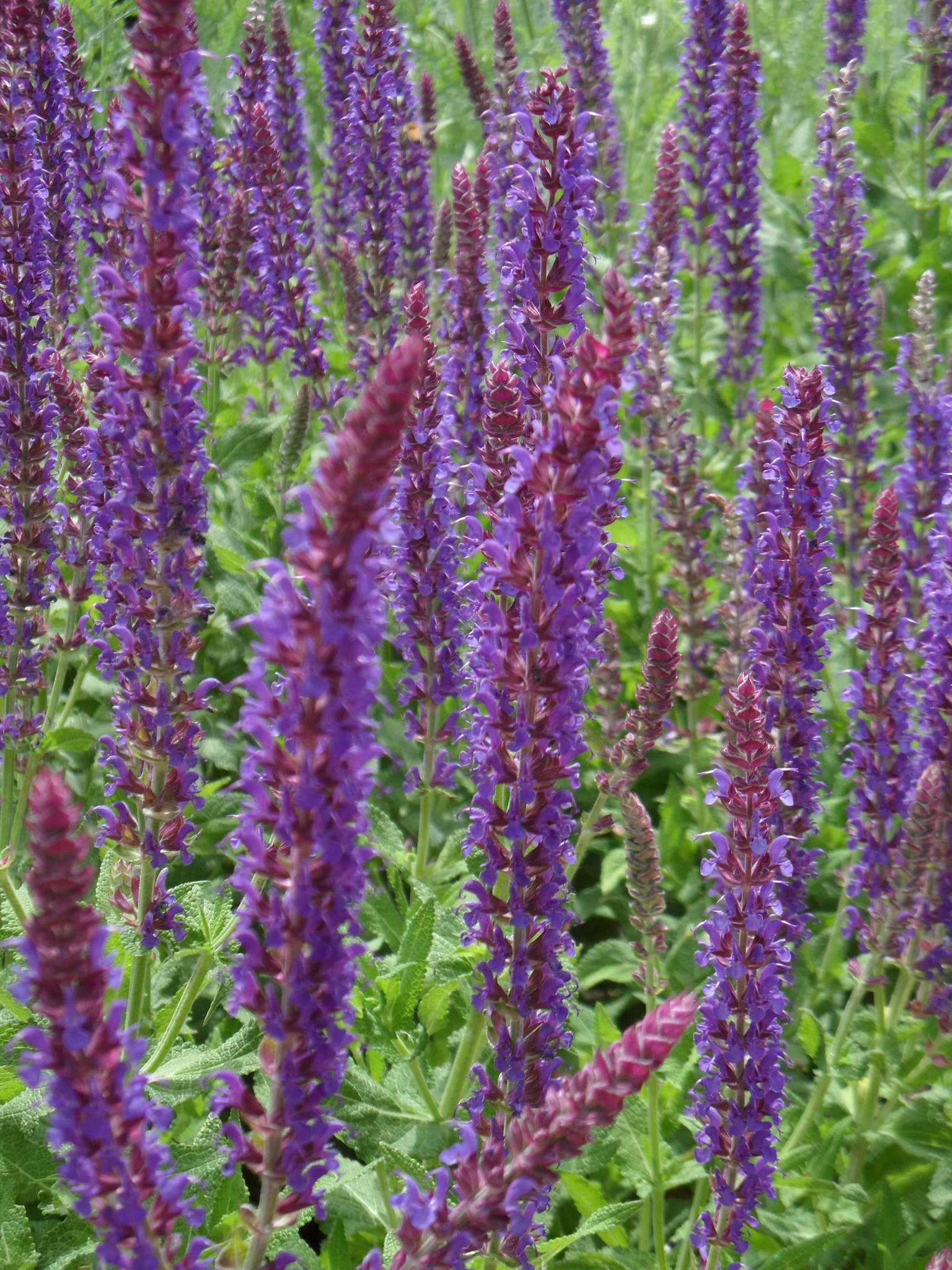
Herbaceous perennial with flower spikes to about 70 cm tall. Leaves ovate to oblong, to 7 cm long, 2.5 cm wide, tip blunt, margin cut and wrinkled, stalked. Flowers in whorls of 6, in long, dense terminal spikes. Corolla tube about 6 mm long, pink to purple; summer to autumn.
C Asia to Europe
There is some discrepancy between Europe and America in the naming of this species. Plants under this name may also be known as S. ×superba (S. ×sylvestris × S. villicaulis), the true hybrid having smaller leaves and forming smaller clumps. They are also listed under the name S. ×sylvestris L. (S. nemorosa × S. pratensis). As understood here, S. nemorosa flowers before it forms a clump and has blunt, wrinkled, often wavy-edged and ascending to clinging grey-blue leaves, while S. ×sylvestris forms basal clumps early and has pointed leaves that are greener, smoother and at right angles to the stem.
Source: (2002). Salvia. In: . Horticultural Flora of South-eastern Australia. Volume 4. Flowering plants. Dicotyledons. Part 3. The identification of garden and cultivated plants. University of New South Wales Press.

Salvia nemorosa 'Ostfriesland'
Flowers rich purple-blue.
A selection made by German, Ernst Pagels, from seed supplied by nurseryman, Karl Foerster. ['East Friesland'].
The cultivars S. 'Lubecca' and S. 'Lye End' are also listed.